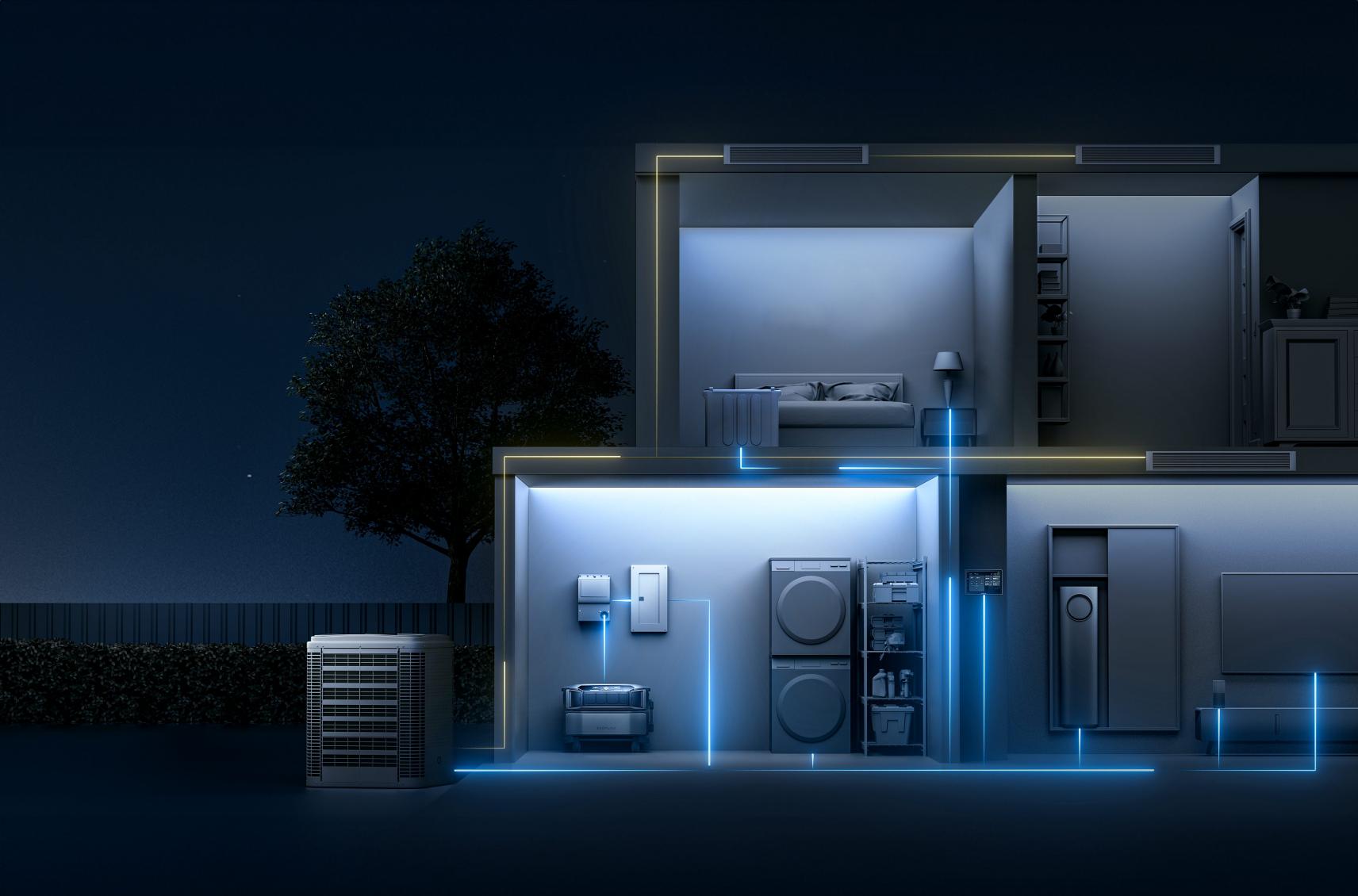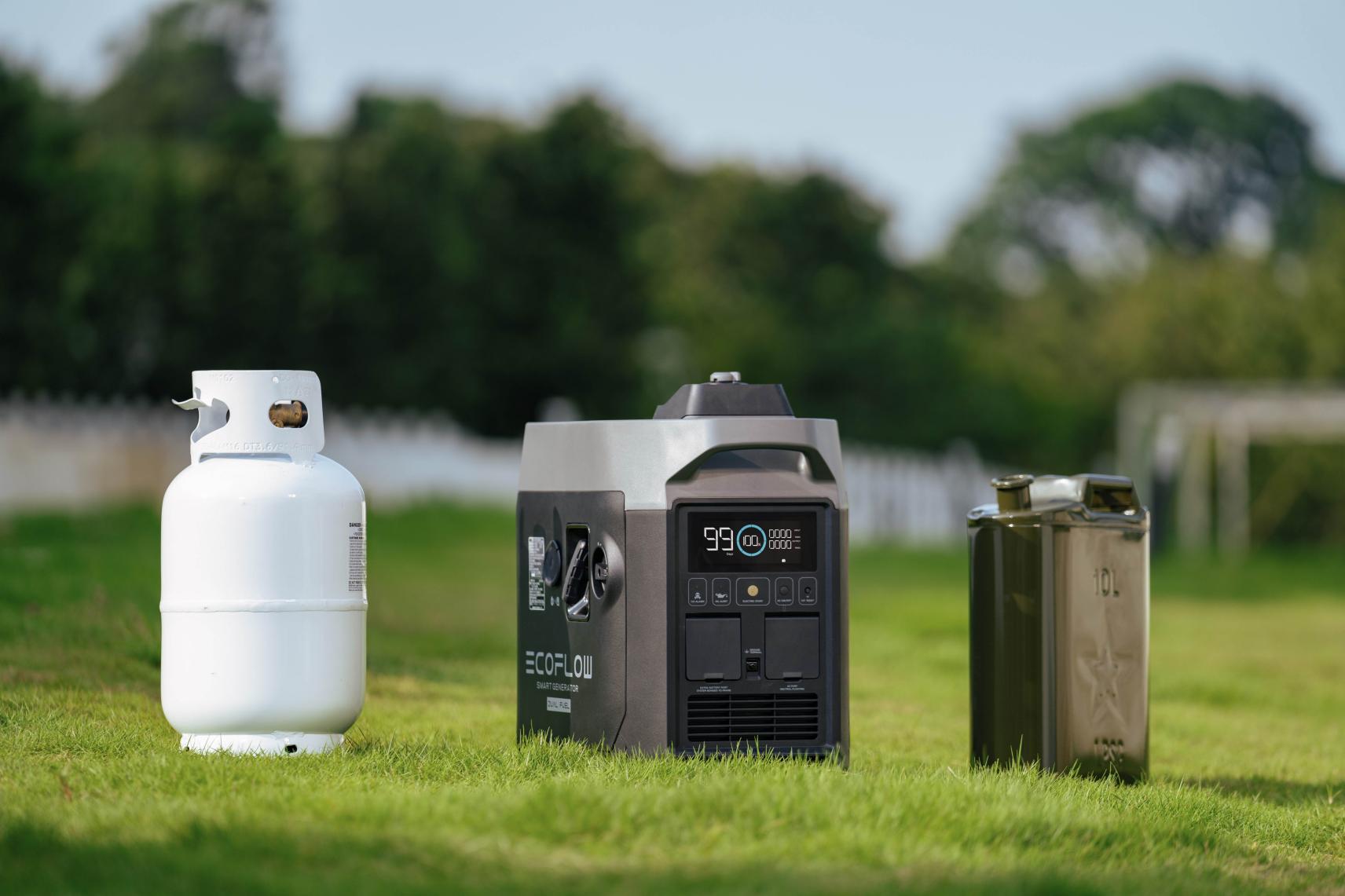Home Battery Backup vs. Propane Generator: The Smart Choice for Long Emergencies
When a big storm knocks out the power, the first few hours are just annoying. But once you pass the 48-hour mark, it becomes a real test. Food starts to go bad, phones die, and life gets a lot harder. During these long power outages, your choice of backup power is more than just a tool—it's what keeps your family safe and comfortable.
The two main options are the quiet, modern home battery backup and the powerful, traditional propane generator. But which one is really the best for an emergency that lasts for days? To figure that out, we need to look at what your home actually needs when the lights stay off.
What Do YouReallyNeed When the Power's Out for Days?
In a long outage, you can't run everything like normal. You have to make smart choices. This means breaking down your home's power needs into three levels of importance.
Level 1: The Absolute Must-Haves
These are the things you absolutely need to keep running for safety and survival. This includes medical gear like a CPAP machine, which is needed for health. Your fridge and freezer are also on this list to save hundreds of dollars in food. A key challenge is providing power for a well pump if you hav·e one, as it's your only source of water. And keeping a few lights on and your phones charged is very important for staying safe and connected.
Level 2: The Comforts
These things make a long outage much easier to handle, but they come second to the must-haves. In the winter, the fan on your gas or propane furnace is key to staying warm. The ability to use a microwave for a few minutes to heat up food also makes a big difference. If you have a gas water heater, you'll need a little power for its fan to get a warm shower.
Level 3: The Luxuries
These are the high-power items that let you live like the power never went out. Keeping these running for days is the biggest challenge for any backup system. This list includes central air conditioning, which often uses the most power in a house. It also includes using an electric oven and stovetop for full meals, doing laundry with an electric dryer, and taking long, hot showers with a standard electric water heater.
Putting Numbers to Your Needs
To compare batteries and generators, we can turn these levels into daily power plans, measured in kilowatt-hours (kWh).
- Plan A: "Survival Mode" (about 6 kWh/day): Just the Level 1 basics. The fridge runs as needed, you use the well pump a little, and medical devices run overnight.
- Plan B: "Comfort Mode" (about 10 kWh/day): All of Level 1, plus some of Level 2. The furnace fan runs a bit in winter, and you use the microwave for a few minutes.
- Plan C: "Normal Life" (about 63 kWh/day): Everything is on. This includes heavy hitters from Level 3 like central AC running for much of the day.
Daily Power Use for Each Plan (kWh)
| Appliance | Running Power (W) | Startup Power (W) | Daily Use (hours) | Plan A: Survival (kWh) | Plan B: Comfort (kWh) | Plan C: Normal Life (kWh) |
| Level 1: Must-Haves | ||||||
| Fridge/Freezer | 500 | 1500 | 8 (cycles on/off) | 4 | 4 | 4 |
| CPAP Machine | 50 | 50 | 8 | 0.4 | 0.4 | 0.4 |
| Well Pump (1/2 HP) | 1000 | 4000 | 1 | 1 | 1 | 1 |
| LED Lights (3) | 45 | 45 | 5 | 0.23 | 0.23 | 0.45 |
| Device Charging | 25 | 25 | 4 | 0.1 | 0.1 | 0.2 |
| Level 1 Subtotal | 5.73 | 5.73 | 6.05 | |||
| Level 2: Comforts | ||||||
| Furnace Fan (Gas) | 600 | 1200 | 6 (cycles on/off) | - | 3.6 | 3.6 |
| Microwave | 1500 | 1500 | 0.25 (15 min) | - | 0.38 | 0.75 |
| Coffee Maker | 1000 | 1000 | 0.17 (10 min) | - | 0.17 | 0.17 |
| Level 2 Subtotal | 0 | 4.15 | 4.52 | |||
| Level 3: Luxuries | ||||||
| Central AC (3.5-ton) | 3500 | 6000 | 12 (cycles on/off) | - | - | 42 |
| Electric Water Heater | 4500 | 4500 | 1.5 | - | - | 6.75 |
| Electric Stove/Oven | 2000 | 2000 | 1.5 | - | - | 3 |
| TV/Entertainment | 200 | 200 | 4 | - | - | 0.8 |
| Level 3 Subtotal | 0 | 0 | 52.55 | |||
| Total Daily Power (kWh) | 5.73 | 9.88 | 63.12 |
Note: These are estimates. Your actual usage will vary.
One key thing to understand is the "challenge of startup power." Your choice of backup system is often decided not by how much power you use on average, but by the biggest burst of power needed to start things like your well pump or AC. A battery home backup might have plenty of stored energy, but if its inverter can't deliver that big initial jolt, the appliance will never turn on.
The Home Battery System: A Modern Power Solution
A home battery backup is like a giant, silent power bank for your house. It offers a clean, modern way to keep your home running. The runtime of backup batteries for home is simple math: how much power you have stored divided by how much you're using. Let's see how a typical 15 kWh battery does.


How Long a Battery Lasts on One Charge (in hours)
| Battery Size (kWh) | Plan A: Survival (5.73 kWh/day) | Plan B: Comfort (9.88 kWh/day) | Plan C: Normal Life (63.12 kWh/day) |
| 15 kWh | 56.5 | 32.8 | 5.1 |
| 30 kWh | 113.1 | 65.6 | 10.2 |
| 45 kWh | 169.6 | 98.4 | 15.3 |
Note: Calculations assume you only use 90% of the battery's power to protect its lifespan.
The hard truth is that a standard 15 kWh battery running in "Comfort Mode" won't even last 48 hours. This means you absolutely need a way to recharge. For a battery system, solar panels are the way to refuel when the grid is down. The very storms that cause long outages are also not great for solar power. On a cloudy, rainy, or snowy day, your solar panels might only produce 10-25% of their normal power.
The main point is this: during a storm, solar panels don't power your home. They just act like a brake pedal, slowing down how fast your battery uses up power. Your main source of energy is still the limited amount you had stored before the power went out. In short, a battery offers silent, clean, and effortless power. It's perfect for handling outages without disturbing you or your neighbors.
The Propane Generator: Your Personal Power Plant
A propane generator is a simpler, more powerful solution. It's like having your own little power station that can run as long as you have fuel. A standard 20kW whole-home generator can handle pretty much everything in your house. Let's see how long it can run with a common 500-gallon propane tank (which holds about 400 usable gallons).


Propane Generator Runtime
| Power Plan | Average Load (kW) | Propane Use (Gallons/Hour) | Propane Use (Gallons/Day) | Runtime with 250-Gallon Tank (days) | Runtime with 500-Gallon Tank (days) |
| Plan A: Survival | 0.24 | ~1.0 | ~24 | 8.3 | 16.7 |
| Plan B: Comfort | 0.41 | ~1.2 | ~28.8 | 6.9 | 13.9 |
| Plan C: Normal Life | 2.63 | ~1.6 | ~38.4 | 5.2 | 10.4 |
Note: A 250-gallon tank holds 200 usable gallons, and a 500-gallon tank holds 400 usable gallons.
This table shows the generator's biggest strength: amazing endurance. With a 500-gallon tank, you could run your house in "Normal Life" mode for over 10 days. But here's the catch: during a big disaster, getting more fuel is nearly impossible. Propane suppliers warn that you must fill your tank before a storm hits, because afterward, roads may be closed and supplies will be gone. So, a generator's "unlimited" power really depends on how much fuel you have stored on-site.
The downside for this power is its impact. Generators are loud, about the same as a lawnmower, and that constant noise can be stressful for you and your neighbors during a quiet blackout. They also produce dangerous exhaust fumes like carbon monoxide, so they must be placed safely outside. And a running generator can be a signal in a dark neighborhood, potentially attracting unwanted attention.
What's the Right Choice for You?
The best option depends on who you are and what kind of risks you're preparing for.
For the Suburban Family
If you deal with occasional outages that last a day or two and have neighbors close by with noise rules, a home battery system (15-30 kWh) is probably the better choice. It handles the most common power outages silently and cleanly. You just have to accept that during a rare, week-long outage, you'll need to live in "Survival Mode."
For the Country Dweller
If you live in a rural area where ice storms or hurricanes can knock out power for a week or more and you depend on things like a well pump for water, a powerful propane generator (20kW or more) with a large 500-gallon tank is the most dependable way to stay safe. In this case, the certainty of having power for a week is more important than the downsides of noise and fuel.
The Best Solution
If you want the best of both worlds and have the budget, you can combine both. The home battery is your main backup, running your essential items silently. The propane generator is the backup for your backup. It's set up to automatically turn on and recharge the battery only when its power gets low. This gives you the quiet power of a battery for most outages, and the generator fixes the battery's biggest weakness: its dependence on sunny weather. The generator runs much less often, which reduces noise, fumes, and fuel use. You get the ultimate in power you can count on, with a system that can last for weeks.
Choosing the Best Emergency Power Solution
Choosing between a home battery and a propane generator isn't about which one is "better." It's a decision about what kind of risk you want to prepare for.
A home battery is an investment in high-quality, silent, but limited power. It's perfect for common outages but has its limits in a long disaster.
A propane generator is an insurance policy for long-lasting, powerful, but noisy and disruptive power. It's built for the worst-case scenario.
The right question to ask isn't "Which is better?" but "Which one best protects my family from the risks I'm most worried about?" For those who want to be ready for anything, a hybrid system offers the most complete and reliable solution.